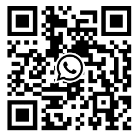The Internet of Things (IoT) is the most popular technology buzzword in recent years. IoT technology refers to the collection, sharing, and analysis of data, and the creation of value from it. But without accurate data, the Internet of Things will also become a useless technology, so the importance of sensors and actuators enables them to perceive the world around them and take action accordingly.
Understand sensors and actuators
The Internet of Things consists of several technical layers that enable ordinary things to share data and ultimately provide intelligence, autonomous action, and value, which largely depend on the quality of the data itself. Therefore, sensors and actuators are indispensable components in IoT technology and are also success or failure factors in the development of every IoT system.

Obviously, sensors and actuators are very important for the Internet of Things, but what are they? Sensors, also known as transducers, are devices whose task is to monitor events or changes in the surrounding environment and convert these physical phenomena (such as temperature, light, air temperature, motion, chemicals, etc.) into outputtable signals, which can then be meaningfully interpreted. On the other hand, actuators can be seen as tools that function opposite to sensors. By interpreting the signals emitted from the control system and converting them into mechanical motion, actuators actually change their physical environment through various simple actions, including but not limited to opening or closing valves, changing the position or angle of other devices, activating them, or emitting sound or light.
Although ordinary electronic sensors and actuators have existed for decades and are ubiquitous in modern industrial applications, the emergence of the Internet of Things has opened up new possibilities for the application of sensors and actuators, not only in the industrial field, but also in the commercial and household fields. As indispensable driving factors for the Internet of Things, sensors and actuators help monitor, control, and simplify operations in various fields, from smart cars to rainforest protection. The Internet of Things has completely changed their application methods and expanded their application scope, enabling sensors to be used in powerful, cloud based analysis software to develop intelligent solutions for machines, people, and the environment.
Considering all the above factors, there is no doubt that in order to maintain its rapid development, the Internet of Things requires increasingly efficient (preferably low-cost) sensor solutions. A reliable sensor and actuator system is the foundation for building every intelligent deployment, therefore it is necessary to understand existing IoT sensor solutions and options. Next, let's explore the most commonly used sensor types in IoT projects.
Sensor type
Sensors can be independent devices or embedded into ordinary objects or machines to make them intelligent. According to the physical phenomena to be measured, they can be divided into several different categories. Below are some of the most widely used sensor types in the Internet of Things.
▲ Temperature sensor
This most basic sensor is suitable for various IoT use cases, where tracking the thermal conditions of air, work environment, machines, or other objects is crucial. Temperature sensors are particularly useful in manufacturing factories, warehouses, weather forecasting systems, and agriculture, where soil temperature monitoring aims to provide a balanced and maximized crop growth environment.
▲ Humidity sensor
Although their most obvious and widespread use is for reporting and forecasting weather in meteorological stations, it is surprising that humidity and moisture sensors are also widely used in agriculture, environmental monitoring, food supply chain, HVAC, and health monitoring.
▲ Light sensor
By relying on the intensity of ambient light, smart televisions, mobile phones, or computer screens can adjust brightness through light sensors. However, sensors used to detect ambient light are not only common in consumer electronics products, but also in smart city applications. They are increasingly used to adjust the level of street lights or urban lighting to improve economy.
▲ Sound and noise sensors
Intelligent sound sensors can monitor the noise level in a given environment. Sound sensor systems are increasingly valued in smart city solutions as they can measure and provide data to help prevent noise pollution.
▲ Water level (liquid level) sensor
In order to prevent natural disasters, the data collected by water level monitoring sensors can be used for analysis and prediction in flood warning systems. In addition to environmental protection, this sensor can also be used in various industrial applications to control and optimize manufacturing processes.
▲ Presence and proximity sensors
By emitting an electromagnetic radiation beam, this type of sensor can sense the presence of its target object and determine the distance between the two. With their high reliability and long lifespan, they have quickly entered many IoT fields such as intelligent cars, robots, manufacturing, machinery, aviation, and even intelligent parking solutions.
▲ Motion sensor
Intelligent building systems may be the most common use case for motion sensors in the Internet of Things. Although this obvious fact is generally correct, in addition to helping monitor private or public spaces from intrusion and theft, the use of motion sensors is expanding to many other aspects such as energy management solutions, smart cameras, automation devices, and more.
▲ Gyroscope sensor
The task of this sensor is to detect rotation and measure angular velocity, which makes it very suitable for navigation systems, robots, consumer electronics, and manufacturing processes involving rotation. For more everyday IoT applications, gyroscope sensors are increasingly installed in IoT devices used by athletes to accurately measure body movements, analyze and improve their performance.
▲ Chemical sensor
Sensors for detecting compounds (solid, liquid, and gas) are essential elements in industrial safety systems, environmental protection solutions, and scientific research. In addition, they have established a foothold in air quality monitoring supported by the Internet of Things, which helps cities combat the harmful effects of air and water pollution.
▲ Image sensor
Image sensors convert optical data into electrical pulses, enabling networked devices to observe the surrounding environment and use insights from the provided data analysis to take action. Whenever intelligent devices are needed to "see" the surrounding environment, image sensors are used, including intelligent vehicles, security systems, military equipment such as radar and sonar, medical imaging equipment, and of course, digital cameras.
Type of actuator
Executors, as the name suggests, can act on their immediate environment, enabling the machines or devices they embed to operate correctly. Although they are small and rarely seen during operation, their working effect can be felt in vehicles, industrial machines, or any other electronic equipment involving automation technology. According to its construction mode and its role in specific IoT environments, it can be divided into four main categories:
Linear actuator - used to cause objects or components to move in a straight line.
▲ Rotary actuators - They can achieve precise rotational motion of device components or the entire object.
▲ Relay actuators - This category includes electromagnetic based actuators used to operate lights, heaters, and even power switches in smart cars.
▲ Electromagnetic valve actuators - As part of the locking or triggering mechanism, they are most widely used in household appliances and also serve as controllers for gas and water leakage monitoring systems based on the Internet of Things.
Sensors appear to be insignificant small devices that can feed data into IoT systems, and this is the true foundation for building machine intelligence. On the other hand, actuators represent the driving force behind every intelligent enterprise. In both cases, the Internet of Things is not only interested in their perception and operation, but also in their ability to make things faster and better.
Contact: Qui
Phone: 18146178586
Tel: 18146178586
Email: qui@zonewu.com
Add: 1501-3, Building F03, Phase III, Software Park, Jimei District, Xiamen City, Fujian Province, China
